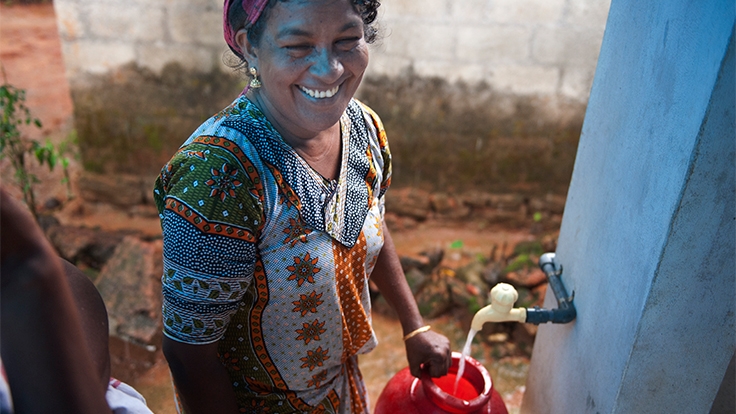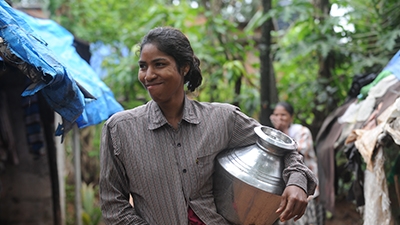The summer of 2013 was unusually harsh in the southern state of Kerala, the lush coastal state in southern India. Before the monsoon arrived, there was little relief from the scorching summer heat for the parched and thirsty population.
“Most of our wells dried up this summer,” says Ajithkumar, the bearded head of the Mundathikode gram panchayat – village council – in Thrissur district in north Kerala. “The dams had no water to spare to irrigate our fields and recharge our wells. Hundreds of families would have been in dire trouble had it not been for Jalanidhi,” he adds, citing the Kerala government’s innovative rural water supply project, supported by the World Bank.
Jalanidhi, which began in 2000, has gone a long way in ensuring that rural families in many water-stressed parts of north Kerala receive a dependable supply of piped water in their homes, at a price that even low-income households can afford.
Kerala is thirstier now than a decade ago
“Kerala is thirstier now than a decade ago,” explains Ajithkumar, accounting for recent water shortages. Although the state receives one of the highest levels of rainfall in the country, its undulating terrain drains most of the rainwater into the sea.
“About 25 years ago, most people met their water needs from open wells and hand pumps that tapped into the abundant groundwater.” But now, demand for water is soaring. “Nuclear families are growing and about 500 new homes are being built every year in our area alone. People also have more affluent lifestyles and tend to use water wastefully since they no longer have to draw it up themselves from village wells, but use motorized pumps to do so instead.”
On the other hand, water sources are shrinking. Across the state, the rapid growth of built up areas and the loss of vegetative cover, ponds and wells has led to insufficient recharge of groundwater, contributing to falling water tables.
Until Jalanidhi came, most women spent many hours a day collecting water, often carrying it from distant wells or waiting for it near public taps, uncertain when and if the water would come. Many had to walk to distant rivers and ponds to bathe and wash clothes.
Communities take charge
The project sought to help villages plagued by chronic water shortages, making special provisions to include vulnerable people such as tribals, scheduled caste communities as well as fisher-folk within the project’s ambit.
Small groups of households who wanted better water supply were helped to come together to build and run their own water supply schemes. They were helped to dig new wells (to tap into the upper layers of water) drill bore-wells (to tap into deeper aquifers), or build systems to draw water from the state’s numerous springs, streams, rivers and lakes. They were also helped to build storage tanks and lay down pipes to distribute water to village homes. While the state government bore the lion’s share of capital expenditure (75%), the gram panchayat paid 10 %, and the beneficiaries themselves 15%.
Community groups determined the timings and duration of water supply to member families, and levied service charges to meet their operation and maintenance expenses. A number of communities installed water meters to curb consumption.
The Project’s success has helped dispel a number of long-held beliefs: one that piped water supply is a privilege only for the better-off; and two, that the poor are unwilling to share the capital costs of their schemes, or pay the cost of operations for the water they use.



